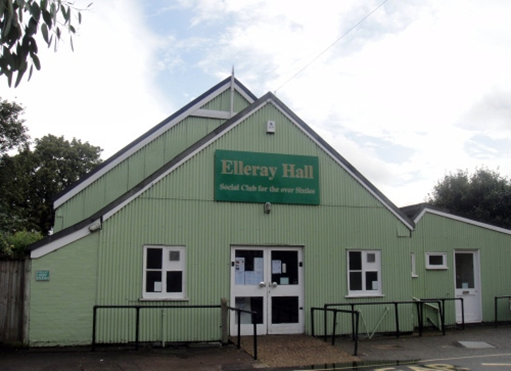Elleray Hall Historic Building Deserves Protection

“How will we know it’s us without our past”
John Steinbeck
Elleray Hall must be preserved as a structure of some consequence and as an example of our cultural heritage.
Rehabilitating this old parish hall, an example of a corrugated iron architecture, also referred to as Tin Tabernacle, is important from cultural, environmental and moral perspectives.
In the 19th and early 20th century, many such corrugated iron churches, chapels and mission halls were erected to respond to the rapid growth in the urban population. Very few of these structures now remain, with only five preserved in London. Elleray Hall should be officially recognised as the sixth such structure in our city. Years of underfunding and neglect by successive administrations led to the significant deterioration of the building which now consequently requires extensive refurbishment.
Elleray Hall remains a building of significance that finally deserves careful restoration and preservation.
Archive documents date the building to 1907. Records indicate significant community engagement, testified by the £730 raised by local people of modest means to help fund the erection of this corrugated parish building.
This was not an insignificant sum at the time. The hall is therefore a community asset paid for, in part, by local citizens over one hundred years ago. Subsequent generations have a moral responsibility to preserve what was at the centre of the community before us. This building, like any other historic building, provides a connection to the lives and aspirations of the ordinary people who lived in this area in the past.
There are other pressing reasons why Elleray Hall building must be preserved and refurbished rather than demolished. The climate emergency demands that the local government projects show leadership, ambition and creativity to meet the highest sustainability standards. There is no excuse for complacency and short-term cost justifications for anything other than carbon neutral developments. Future generations will not thank us for anything less.
There is now a consensus among experts that utilising existing assets, with all the embedded carbon, and repurposing structurally sound architecture is the most effective and morally responsible way of reducing carbon impacts, whilst simultaneously preserving buildings that connect us to the past. Rushing to ‘the new’ comes at a great carbon cost.
‘……at its best, preservation engages the past in a conversation with the present over a mutual concern for the future.’
(William Murtagh, first keeper of the National Register of Historic Places)


